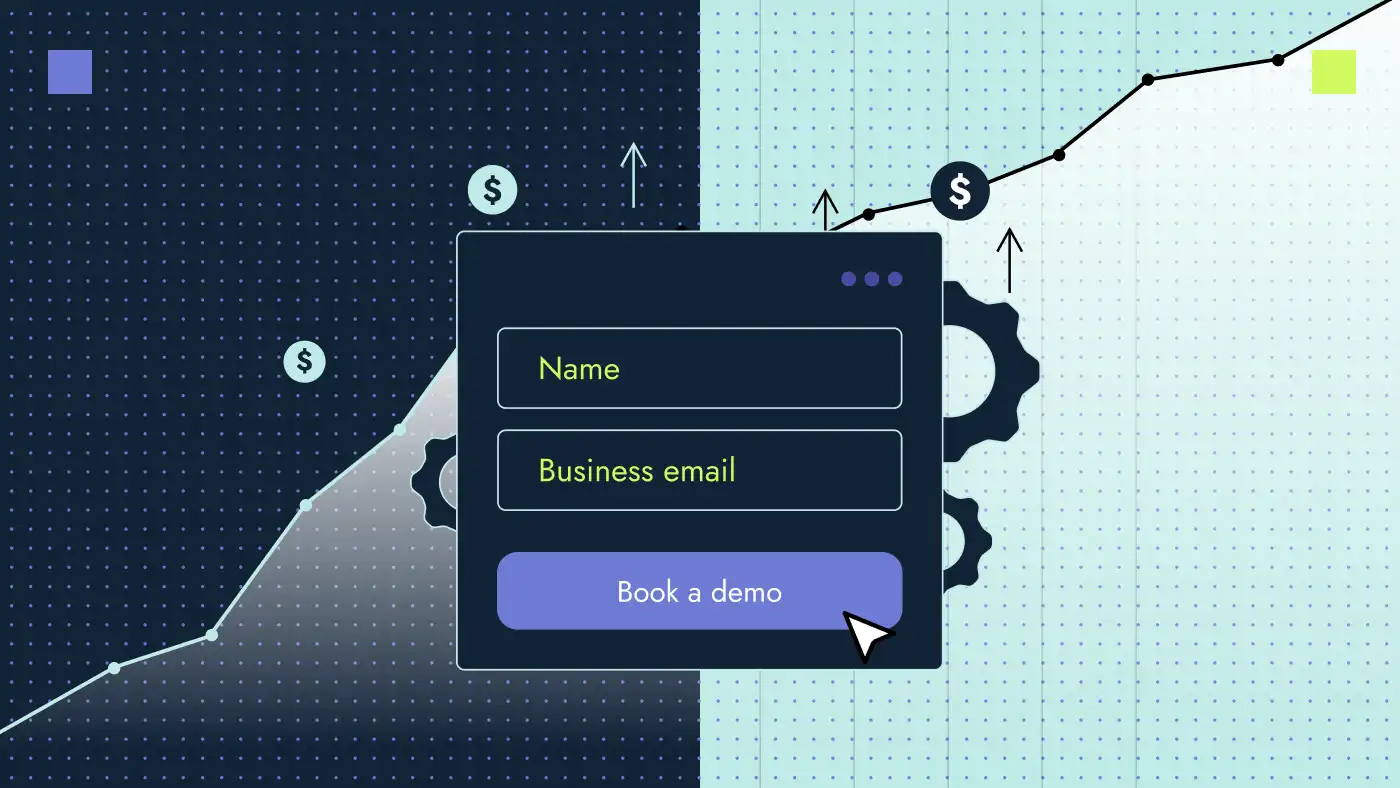How many times do you actually pay attention to what’s in your inbox, other than direct emails from your colleagues? Now, how many times do you take action on the promotions that you do pay attention to?
Although those questions can seem a little defeating at first, email remains the #1 way of influencing opinions, attitudes and nudging for action. That’s because your B2B audience uses email as a primary means of communication, so you’re basically talking directly to them, if you get it right.
There are very few B2B companies I’d bother to follow to get useful advice that will contribute to my professional & company growth…I’m not talking about HBR, WSJ or INC. I’m talking about eCommerce, CRM, ERP and various associations’ attempts to get my attention with their oh-so-boring messaging.
So, as B2B marketers & inbound sales people we’ve got some serious weight on our shoulders, and it all has to do with audience engagement.
Segmentation & Personalization
We consistently get a 40% + open rate since we segment emails and refrain from sending them at a vomit inducing rate. Our following of 4.5k senior marketing & sales leaders regularly interact with our emails & landing pages, simply because we serve them with sh#t they can actually use ~ Eillie Dagger, Growth Director | Productive Shop
What will help you get more engagement & leads is the #1 rule of email marketing, that is, to stop thinking of it as email marketing. Never create a newsletter just because you think you need to have one, some companies are better off without them, if you genuinely have something to share that your audience cares about, then go for it
Most lead-gen teams target a generic cluster of job roles within an industry in a set geography, forgetting the one simple thing that actually matters, targeting audience needs & simply speaking human to them…will do the trick.
Segmentation allows you to deliver the right message to the right audience at the right time. In order to run effective B2B email marketing campaigns you must know your audience’s critical differentiators, to get them, you’ll need to understand the following:
- Buyer Journey: at which purchasing stage is your prospect likely to be at? You need to know this in order to send them an email with an offer that resonates with their needs at that moment.
If your audience is just discovering your services you’ll probably want to hit them with white papers, survey results & comparisons.
If your audience is looking to get a demo, you’ll want to offer them a trial account, a free consultation, case studies or an assessment.
Alternatively, if the audience is an existing customer, you’ll want to offer them ways to improve the use of your services along with serving them with industry tips & tricks to keep them hooked.
- Buyer Persona: who are you targeting? Emails are more than just building and delivering great content, you need to know who you’re serving and why they would give a sh!t about what you have to say…what’s in it for them?
To get solid open rates, click through rates and reduce your unsubscribes, ensure you’re directly satisfying the top challenges your audience is facing, at the moment.
Personalization is key to building a sound email practice since it helps build trust, credibility and loyalty between you and your audience.
By 2022, 25% of marketing departments will have a dedicated behavioral scientist or ethnographer as part of their full-time staff. ~ Gartner 2019
Assume you’ve got the journey, persona & segmented lists in your CRM setup, how do you actually build an email and what are the critical elements to keep in mind?
How to improve your email marketing
Email Variations
- It goes without saying that you should not (ever) send the same emails to different groups of people. Everything from your subject line, images, body, tone, CTA and cadence should be tailored to your audience’s persona & known touches with your business.
- In case you’re still determining email resonance, you can use A/B testing features baked into any great marketing automation software, to see if a subject line, image or offer catches more attention. This way, you can hone in on using the more effective email variation. Don’t forget that to get statistically sound results, you want to hit more than 1,000 relevant people.
Subject Line
- The best email subject lines get straight to the point and do not click-bait (that’s how you get unsubscribes).
- Be short, be relevant, be on point and manage expectations as to what the reader is about to see in the body of your email.
- Do not use exclamation marks, dollar signs, too many capitals or words that trigger spam like FREE, EXCLUSIVE, FINAL OFFER, etc. As a rule of thumb, if you’re sounding like an infomercial selling a snuggy, don’t do it – but wait, there’s more 👇
- Do cautiously use emojis in subject lines. This will vary with the type of audience you have, but multiple studies point to solid improvements in open rates when you can be witty about the use of an emoji.
Look & Feel
- The design of your emails should be a reflection of your website or landing page, the message you convey should be congruent with the information, colors and offer which the user will be driven to. If the user finds that the email and site are mismatched, you’re looking at increasing your bounce & unsubscribe rates.
- Use images if absolutely necessary to convey your point, and ensure that they are not heavy in file size, otherwise the images might break, the email be considered as spam and simply look terrible on mobile devices.
- Maintain your brand voice & tone, that means if you speak like a self-built growth hacker, don’t be the snobby aristocrat in your comms, that won’t resonate well with your audience who’s expecting the down-low on new trends and shit.
Promotion & CTA
- Your promotion must be attractive to the reader. Bullsh!t promotions don’t fly in B2B as you’re typically dealing with a much more intellectual audience & a bigger group than the B2C market. Think of your promotions as your ticket to a demo instead, incentivize accordingly to get that initial meeting.
- The call to action (CTA) needs to speak to the user, great marketers know this and avoid it at all costs using the mundane classics; Download Now, Book Today, Get a Consultation, Get a Free Trial and the list goes on, Read More below. Your CTA is your portal to the landing page, so speak with your audience, the likes of “Let’s grab a virtual coffee” or “Take a peek at the 2020 growth stats” typically work better.
Opting in & out
- Make it easy for people to unsubscribe (opt-out) from your communications, have a dedicated space below the email that’s easily recognizable. Yes, your unsubscribe and email preferences pages should have the same look & feel as your brand. It’s also your last chance to grab someone’s attention, so try offering something they can’t refuse (sometimes people try unsubscribing in the heat of the moment).
- Make it easy for people to verify they want to receive emails from you (opt-in). The best practice for this -and you won’t like this- is double opt-in. Meaning when a user subscribes, you send them a welcome email and verify that they’ve
Device & Browser compatibility
- Device Previews: desktop & mobile are now on-par in open rates, this means you should follow design best practices to ensure that both desktop & mobile are supported. Most marketing automation software allows you to use their device emulator to check how your emails will look on various devices.
Tip: in case you’re starting out in email marketing, looking at your Google & Search analytics, you’ll know which device your market prefers to use. Once you send out the email, analyze which dominant devices your email has been delivered & viewed.
- Email client previews: just like devices, you need to ensure your email doesn’t look like a dog’s breakfast when it hits various email clients like Microsoft Outlook, Google Mail, Apple Mail, Yahoo Mail, etc.
Nurture Leads & maintain list hygiene
- Growing a healthy email list from the start is critical to the success of your inbound efforts. Ensure people can easily subscribe to your communication from all pages of your website, landing pages & social accounts. But simply building a list of people interested in you is just the start, you’ll now need to keep them engaged…
- Build lead nurturing tracks via automated emails to keep users engaged. From the technical perspective, nurture tracks are workflows that move customer records into email delivery paths most likely to resonate with their buyer journey.
- Don’t let audiences get stale, as obvious as this sounds, ensure that nurture tracks & sales lists include a re-engagement strategy. Your audience should hear from you regularly to remember you, don’t be the brand to email people with a “we’re here for you in this difficult time” letter, if you weren’t there at a regular time (and yes, that’s a bullsh!t subject line also).
Analyze & Optimize
Almost every report on email open rates concludes that mobile is responsible for at least 50% of all opens. ~ Campaign Monitor, 2018
- Test the send day, time, and frequency (weekly, bi-weekly, monthly). When we stopped sending a vomit-inducing amount of emails (weekly), we’ve seen our unsubscribe rate fall, and open rate stabilize at 40% with peaks hitting at 50%+. Very few emails, other than system updates/weekly auto reports require a weekly send, trust me you’re not adding value to the reader anyway other than annoying them.
- A/B Testing allows you to hone in on what works in your emails (and not just newsletters). You basically “test” various approaches to increase audience engagement, from adjusting the subject line, to color of backgrounds, use of images and of course…CTAs. If you’re crunched for time, prioritize testing the subject line, preview text and the CTA.
- Open rates are great for identifying the accuracy of subject lines, timing & audience selection. Use A/B testing above to isolate these factors to hone in on the ones that get email open rates past the average of 18% to 21% across the B2B industry.
- Click through rates (CTR) are great for identifying copy & promotion resonance, does your audience see value in the offer? Keep in mind low CTR may also mean that your design is cheesy or unclear so users just stop at the email without action.
- Identify persistent opens & clicks (engagement indicator) to shortlist people which are highly engaged with your communications, perhaps its time to add a higher lead-score to them or feed them to the round-robin.
- A high unsubscribe rate may mean your segmentation practice lacks definition (assuming your design & copy is on the ball).
- Test the sender’s email address & from name, for example our cold reachout & case study emails are more liked when they have a female vs male name. Conversely, when we are putting hard stats and talking about marketing for the financial industry, a male name seems to resonate more. The from name and email don’t have to be a person, they can be the likes of curiouslyproductive@ or marketingsupport@ for instant source recognition, those do well also ;)avo
- Do not use URL shorteners as they hurt your deliverability. As great as tiny URLs are for social, they also HIDE where the link actually goes. It’s always great SEO practice anyway to have a clear read and defined URL, and by the way…you can also use anchor text which works wonders.
Speaking of analytics, knowing average benchmarks doesn’t hurt if you’re starting out, it helps baseline what you need. Keep in mind your goal is to always perform better, here’s a sample of our clients’ industry benchmarks.
| Industries | Open Rate | Click Through Rate | Click to open rate | Unsubscribe Rate | Bounce Rate |
|---|---|---|---|---|---|
| Financial Services | 20.2% | 2.5% | 12.4% | 0.2% | 1.2% |
| Software Services, IT, Tech | 17.6% | 2.5% | 14.3% | 0.2% | 0.9% |
| Professional Services | 18% | 1.8% | 9.9% | 0.2% | 0.8% |
| Logistics & Wholesale | 18.9% | 2.2% | 11.7% | 0.3% | 1.2% |
| Contracting, Construction, Manufacturing | 22.4% | 3.2% | 14% | 0.3% | 2.2% |
| Healthcare | 19.7% | 2.7% | 13.7% | 0.2% | 1% |
(Campaign Monitor 2020)
Ideas to get you started
Email marketing remains one of the most important and effective ways for your business to connect with customers and build lasting relationships with them ~ HubSpot, 2020
1. Software & Theory updates
If you run a software shop or even a management consulting firm, you’ll fare well with quarterly updates on the newest releases of your software version, bug fixes and did you know statements. Likewise, if you’re into consulting provide updates to valuable market trends tailored to the audience receiving it.
This should almost be a default campaign that’s wrapped with exciting copywriting, design, and bite-sized material that’s easy to engage with and upsell or cross-sell.
2. Case study releases
Everyone loves a case study, in fact, a well-written customer story backed by a quick verification call is what helps close deals in our B2B world. Case studies should be so critical to your marketing efforts that if you don’t have PDFs, Videos, Webpages, and active templates for them, you should be raising a large, red, flag.
Now, a case study delivered via email as an update, to a relevant audience is a killer way to show continued credibility, let the audience “naturally” discover features and services they didn’t know you have and want to contribute one to you also, for their 15 minutes of fame.
3. Partner announcements
Let everyone know that you’re a force to be reckoned with and then being in your circle has many benefits – like cross-connecting with a trusted network of compatible companies.
Channel partner material helps create your business a new revenue stream via % for cross-sells, bring in new deals via your partner’s network, and let you play a new influential ball game in your industry which few even know how to enter.
4. Event invitations
This is painfully obvious, but…thought I’d mentioned it – host client appreciation events, and invite people well in advance to them. And, if you’re not hosting them, then help your market discover your channel partner’s events – that’s where deal slinging happens anyway.
5. Lessons learned / FAQ roundup
If you’re running your business right, you’re consistently seeking feedback from your employees in written and knowledge base form. Get the marketing team to wrap these up in a lessons learned series with a touch of humour to them, and watch the unicorns appear.
6. Holiday wishes
You must, if anything, send all mandatory holiday wishes to your market – Christmas, New Year, Veterans Day, Thanksgiving day, Labor Day, Mothers Day, etc. This is a cheap and easy way to keep your list clean while winning the hearts & minds of your market.
Red Flags
You didn’t think it was that easy, did you? Here are the critical factors you have to keep a close eye on, or you get royally f#cked.
Sender Score
Think of the sender score as your email sending reputation. If you’ve got a bad score, it’s because you’ve been sending sh!t out that isn’t resonating (people unsubscribe or mark it as spam) and you’re blasting stale emails which bounce.
An email sender score is a number from 1 to 100 – every marketing automation software worth its weight has a sender’s score, at the minimum, check it monthly.
Tip: when you haven’t touched email addresses in a while, ensure to use scrubbing software like Briteverify or Kickbox. Most likely, your campaign or marketing automation software will already have integrated apps that charge per list size.
Here’s a great post by our friends at HubSpot on email deliverability tips.
Buying Email Lists
Do you know who sells lists? Losers. Guess who buys those lists? Bigger losers. In a loser ecosystem, it’s always a race to the bottom, or…a severe penalty.
~ Ellie Dagger, Growth Director | Productive Shop
Buying lists is always a terrible idea, I’m sure you’ve received these too good to be true offers from someone in India that somehow got a list of your relevant audience…Even writing this makes me cringe as to how silly the logic behind of it is, staggeringly, people actually buy lists all the time – then try selling to them for about 12 mon
Watch Out for spam traps: email lists that belong to no one, they have the sole purpose of catching people with bad email hygiene practices (buying lists, not using double opt in, not cleaning lists prior to sending, not getting consent, etc). ISPs use spam tramps internationally, baking them into purchased lists, once that email address receives an email from you – guess what happens? Your send rep gets damaged.
Laws to abide by (must know before sending campaigns)
Learn more, sell better
Email is a critical part of a healthy B2B marketing strategy with almost as high of a return of investment as SEO, it is however, just one part of the marketing game, so what complimentary tactics can help you grow faster? How do you continue attracting & engaging with your audience without pissing them off? 👇
- How knowing personas is twice as likely to help marketing & sales teams reach lead generation & revenue goals.
- Measure your marketing success with KPIs that actually make sense.






